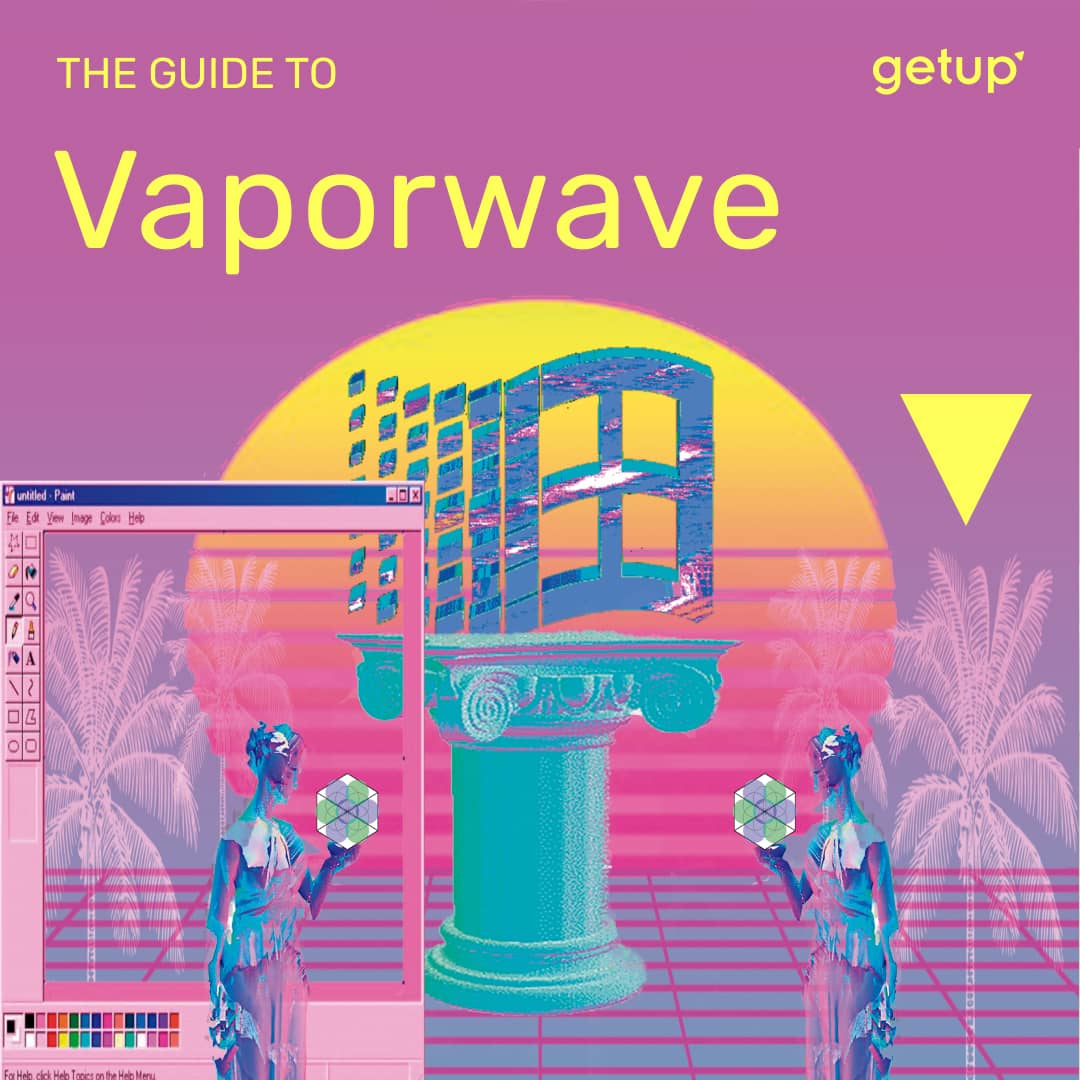Vaporwave is kind of like the digital soundtrack of neoliberal capitalist society. Ten years ago, a whole generation of nostalgic people started hunting down obscure tracks of easy-listening funk and jazz from cheesy hair conditioner ads, shopping mall background noise and elevator muzak, turning the echo up to 11, and adding loops.
The emergence of the genre is rather strange as it was born on the internet in the early 2010s. First came the seapunk movement, a product of the digital underground emerging from Tumblr, where 3D dolphins, pixelated digital oceans and turquoise hair were all mixed together. From then the vaporwave aesthetic has gradually emerged in exchanges on Reddit and Tumblr. Its iconography is tinged with an ironic surrealism made up of metallic geometric shapes, Greek busts, video game jungles and 1990s blog interfaces. It’s as if the painter De Chirico had become a web designer in Silicon Valley.
Two records in particular brought recognition to the genre and laid the foundations of this new musical language. In 2011, James Ferraro released the album Far Side Virtual, an electro soundtrack in praise of all things 1990s: mobile phone ringtones, laptops, Google, sushi... Like Pop Art in the 1960s, Ferraro didn’t invent another world so much as strictly reflect consumer society. His listening advice is eloquent: ‘If you really want to understand Far Side, listen to Claude Debussy first, and then go to a frozen yoghurt shop. After that, go to Starbucks and get a gift card. They have a book on the history of Starbucks – buy that book and go home.’ Ferraro’s muzak thus aestheticises the emptiness of our impersonal consumer reveries. The second landmark record comes from Daniel Lopatin, alias Oneohtrix Point Never. This album, released under the pseudonym Chuck Person in 2010, navigates between concept and joke. Eccojams Vol.1 is a collage of fragments of TOTO, Michael Jackson, Tears For Fears and 2Pac, slowed down and looped ad nauseum. It's a sort of mainstream version of Lou Reed’s Metal Machine Music.
From this came the misty, cotton candy atmospheres created by Nmesh, 18 Carat Affair, Infinity Frequencies, t e l e p a t h テレパシー能力者 and so on. This soaring music gives substance to the decay brought about by the intensive commodification of neo-capitalism. It’s a phenomenon that Karl Marx pointed the finger at in the Manifesto of the Communist Party in 1848. In this seminal work, the German philosopher used a metaphor that has been taken up again to baptise the style of this emerging music: ‘Everything that has solidity and permanence goes up in smoke (...)’. According to Robin Burnett, musician at the head of INTERNET CLUB, vaporwave is ‘the ghost of corporate music, a tombstone genre for empty shopping malls. If everything solid melts into air, then vaporwave is a critique of music created in the airy void of capitalist society.’ If the music we hear is beautiful, perhaps it is because it sounds like refractions of an era that has become so opaque, that one ends up doubting it ever really existed.





